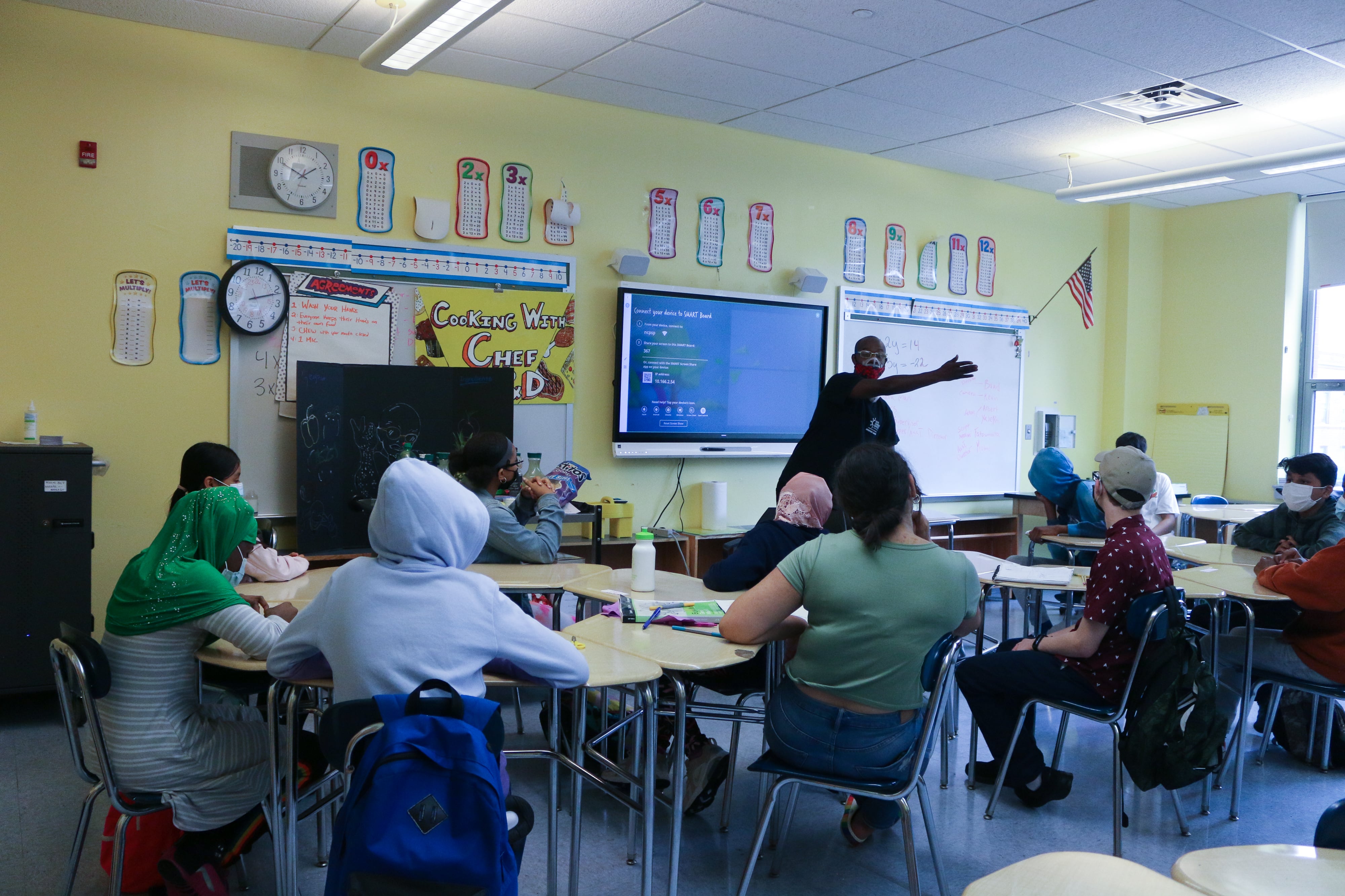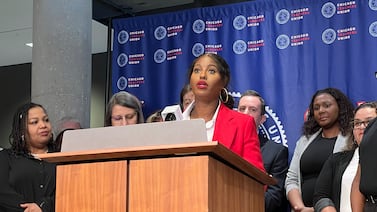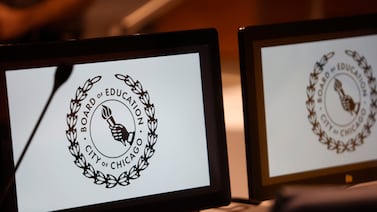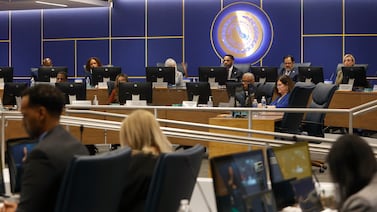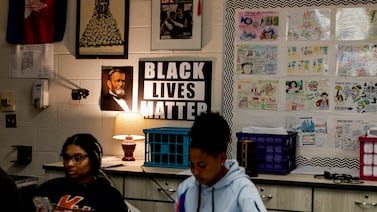Selective admissions will return to dozens of New York City middle schools this fall after a two-year pandemic pause, but in far smaller numbers than before — dramatically reshuffling the city’s notoriously stressful and complex application process.
Schools Chancellor David Banks left the decision to reinstate competitive middle school admissions up to each district’s superintendent, and while some families pushed to restore screens, others lobbied to get rid of them, saying it was unfair to sort the city’s 10-year olds based on their fourth grade academic performance.
After a month of deliberating with their school communities, nearly all superintendents decided to bring back fewer or the same number of screened middle schools as before the pandemic, according to education department data shared as middle school applications opened on Wednesday.
“It didn’t matter to me how the results came out,” Banks told reporters. “What mattered to me was that the community voice was heard and was respected.”
The number of schools using selective criteria dropped 70% from pre-pandemic numbers. Overall, 59 of 478 middle schools will select at least some segment of next year’s incoming sixth graders based on their fourth grade marks, with 24 of those using selective criteria for all incoming sixth graders.
That’s down significantly from 196 middle schools that used some academic screening for the 2020-21 school year, 112 of which screened all their applicants, according to education department data.
Controversy over screened schools
A higher proportion of New York City public schools screen students compared to almost any other district in the country. That stratified system leaves some schools with virtually no students who are on grade level. It also contributes to the city’s status as one of the most racially segregated in the country. Reducing the number of middle schools with selective admissions could move the needle on integrating schools, but without explicit targets for diversifying a student body, some advocates say change could be slow.
“To truly integrate these schools you need to have intentional policies for integration, and that’s still missing in a lot of these districts,” said Nyah Berg, the executive director of New York Appleseed, a group that pushes for school integration. (Manhattan’s District 3 and Brooklyn districts 13 and 15 have admissions that prioritize seats for low-income students and others to promote diversity.)
Banks recently made a vigorous case for screening, arguing that students who work hard deserve access to separate programs, so it is notable that he allowed local superintendents to roll back selective admissions across the city. Banks argued that the decisions were best made at the local level and said deferring to superintendents is part of a broader effort to incorporate parent feedback.
“It’s not about my personal views,” Banks said of the results. District leaders said they would continue to solicit community input and may tweak admissions policies in the future.
All but two of the city’s 32 community school districts decided to bring back either the same number or fewer middle school screens than before the pandemic. District 25, which includes the Queens neighborhoods of Flushing, Whitestone, and College Point, added more screened schools, as did District 29 in Queens, which includes Cambria Heights, Springfield Gardens, and St. Albans.
Ten districts that used admissions screens before the pandemic eliminated them altogether this year, according to the education department data.
That includes the two school districts with the largest number of screened middle schools before the pandemic: Manhattan districts 2 and 3, which counted a combined 33 middle schools with selective admissions criteria in 2020. (Though the Anderson School, a citywide gifted and talented school, is located within District 3 and will continue to screen students.)
Superintendents Kelly McGuire of District 2 (which includes TriBeCa, Gramercy, and the Upper East Side) and Kamar Samuels of District 3 (which spans from the Upper West Side to part of Harlem) both decided to ditch middle school screens this year, despite significant pressure from many families who argued that screens can help ensure that high-achieving students are matched with sufficiently rigorous schools.
Elementary and middle school principals from 24 of the 30 schools in District 3 signed a letter urging Samuels against reinstating screens, arguing that their removal helped equalize access across the district.
In a letter to District 2 families, McGuire explained that his decision is meant to “reduce stress related to the middle school application” and argued that it “creates continuity across the district.”
On Tuesday, McGuire told reporters the new admissions system will reduce confusion and should be simple enough to “fit on the back of a notecard.”
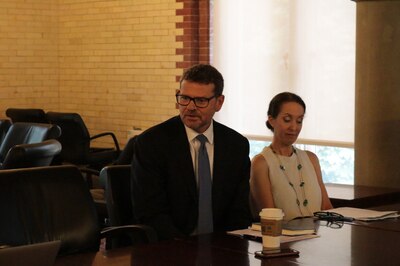
Several middle schools in District 2 will still give priority to students who live in the surrounding neighborhood, and four of those “zoned” schools are adding new “honors-level” math courses.
In addition, the Brooklyn School of Inquiry — one of five citywide gifted programs — will move to a lottery-based process rather than looking at students’ academic records.
Lucas Liu, the president of the District 3 Community Education Council, said he was disappointed by his district’s lack of screens and fears they will reduce the rigor in some classrooms.
“It gets them into programs that the DOE has not properly prepared them for,” Liu said. “We’re not talking about properly educating these kids in elementary school.”
Advocates for school integration said the move represents progress, though some hoped the city would eliminate competitive admissions in middle school altogether.
“Many districts are continuing down an equitable path,” Berg said, “but overall it was still not a step forward for the entire city because we allowed the reinstatement of a policy that’s been proven to segregate and exclude some of our youngest students.”
Declining enrollment comes into play
Another factor that some superintendents say changed the admissions landscape during the pandemic: Falling enrollment meant less seat competition at some of the most traditionally in-demand middle schools. In District 3, 97% of families got one of their top three middle school choices last year, Samuels said.
For schools that reinstate screens, the education department is making the process more uniform: Instead of letting each school determine their own selection criteria, students will be ranked based on course averages from fourth grade.
Prior to the pandemic, middle schools used their own formulas to weight grades, state test scores, and attendance records — measures that went out the window during the pandemic, leading former Mayor Bill de Blasio to pause screens at all middle schools starting in 2020.
That led to a modest increase in the share of low-income students and English language learners admitted to the city’s 46 most selective middle school programs, according to the education department.
When screens were removed last year, the vast majority of students still got their top picks: three-quarters received their first choice, and 91% of applicants got into one of their top three schools, according to education department data.
Middle school application will close on Dec. 1. Students will receive offers in April.
Michael Elsen-Rooney is a reporter for Chalkbeat New York, covering NYC public schools. Contact Michael at melsen-rooney@chalkbeat.org.
Alex Zimmerman is a reporter for Chalkbeat New York, covering NYC public schools. Contact Alex at azimmerman@chalkbeat.org.

